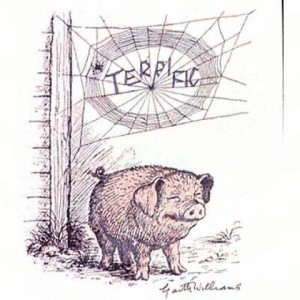I’ve been working with college-aged writers recently and noticed that many of them rush a scene by sending it to me too soon, as if they’re in a race. My job is to get them to be their own critic and not settle for mediocre, even if it means they won’t get a grade. To get noticed in the slush pile of an agent or editor, today’s author must bring something new to the table that is uniquely from them and their storytelling ability.
Using an example of constructing a house, they send me the basic framework, but the finishing touches are lacking. Is the dialogue there? Check. Is there a beginning, middle and end to the writing sample? Check. Did I meet the bare essence of the assignment? Check. But a good house needs walls and all the finishing touches that make it feel like a home. Well-balanced scenes can be those finishing touches that make a house a home. They can add a balance of color/setting, voice, emotion, and memorable characters that doesn’t slow the pace down and make your work stand out as unique, too.
Here are 8 key ways to layer your scene with more depth and make them stand out:
1.) MAKE YOUR VOICE UNIQUE – Pick a POV for the character who will tell the story of the scene and give him or her a unique voice. That means you must see through their eyes and add their senses and opinions to the scene. You can talk about what’s in a room, as if it were a forgettable inventory, OR you can add color by having your character say things like, “the dump smelled like cat piss.” Also give each character their own unique voice, using the same care as you craft each one.
2.) USE ACTION – Show your character taking part in the scene, rather than merely talking about the emotion they’re feeling. A guy who is forced to fight when he’d rather cut and run like a coward will behave differently than a guy who wants to be there and do the right thing. The coward might hang back or urge someone else to take his place or fake an injury to get out of what he really doesn’t want to do. The brave guy would take lead or protect the others by shielding them with his body, for example.
3.) USE DEEP POV – Set your character’s deepest thoughts in italics as “Deep POV” to give the reader insight into your character’s internal motivation. These could be expletives or funny one liners that he /she would mutter under their breath or in their head. The right Deep POV touches can add punch.
4.) WEAVE IN BACK STORY SPARINGLY – Know your character and their back story so you can slip it into the story seamlessly. Not many readers today tolerate a back story dump. There’s not many ways to disguise it either. But weaving a back story over a longer timeframe of your story is a good way to build upon your character’s history without slowing the pace—and it can create a mystery element. Other characters (who have a past with him or her) can fill in the gaps in a more interesting way.
5.) PICK THE ESSENCE OF EMOTION – Emotion is vital to make a scene memorable. Pick out the best images or set the stage in actions that best highlight the emotion you’re trying to weave into the scene. Add only the essential images. This could be a man talking about the small of a woman’s back, at a certain time of day when her body entices the shadows, or his memory of the first time he’d ever noticed how perfect that gentle curve had always been. The sensuality can be there, without overwriting the description of her, plus it conveys his enduring love for her in a sensual way. I’m not a poet, but I often think that good writers have the soul of a poet in them when I read certain passages that make me stop and reread them.
6.) PICK THE MOST PROMINENT PHYSICAL TRAITS – Beauty is in the small details. Today’s average reader may not tolerate an author describing a character in great detail because that would slow the pace, but try picking out the most essential characteristics of your character and pepper your scene with those images to suggest traits, rather than spell them out. Instead of describing how thin a guy is, add color by saying his suit hangs on him as if he were a human coat hanger.
7.) GIVE THE SCENE STRUCTURE – I think of scenes as mini-stories that will propel the story along with 1-3 plot points infused into every scene. They have a beginning, a middle and an end so that the characters in that scene take a journey and move the story forward. Internal monologue should not be repeated. Have your character discover or learn something about themselves during the scene, for example.
8.) ADD SETTING THAT ENHANCES YOUR SCENE – Any scene can be enhanced with the right setting. The bare bones of two characters talking in a study can be enhanced if there is a menacing storm rumbling outside, a loud crackling fire in the hearth, and a musty old library smell in the air from the countless alchemy books that lined the shelves, an extensive collection of magic books that spanned centuries, set in a mansion in the French Quarter of New Orleans. Classic.
I’ve mentioned 8 key ways to add depth to your scenes. Can you add more to this list? Please share your thoughts and what has worked for you.









